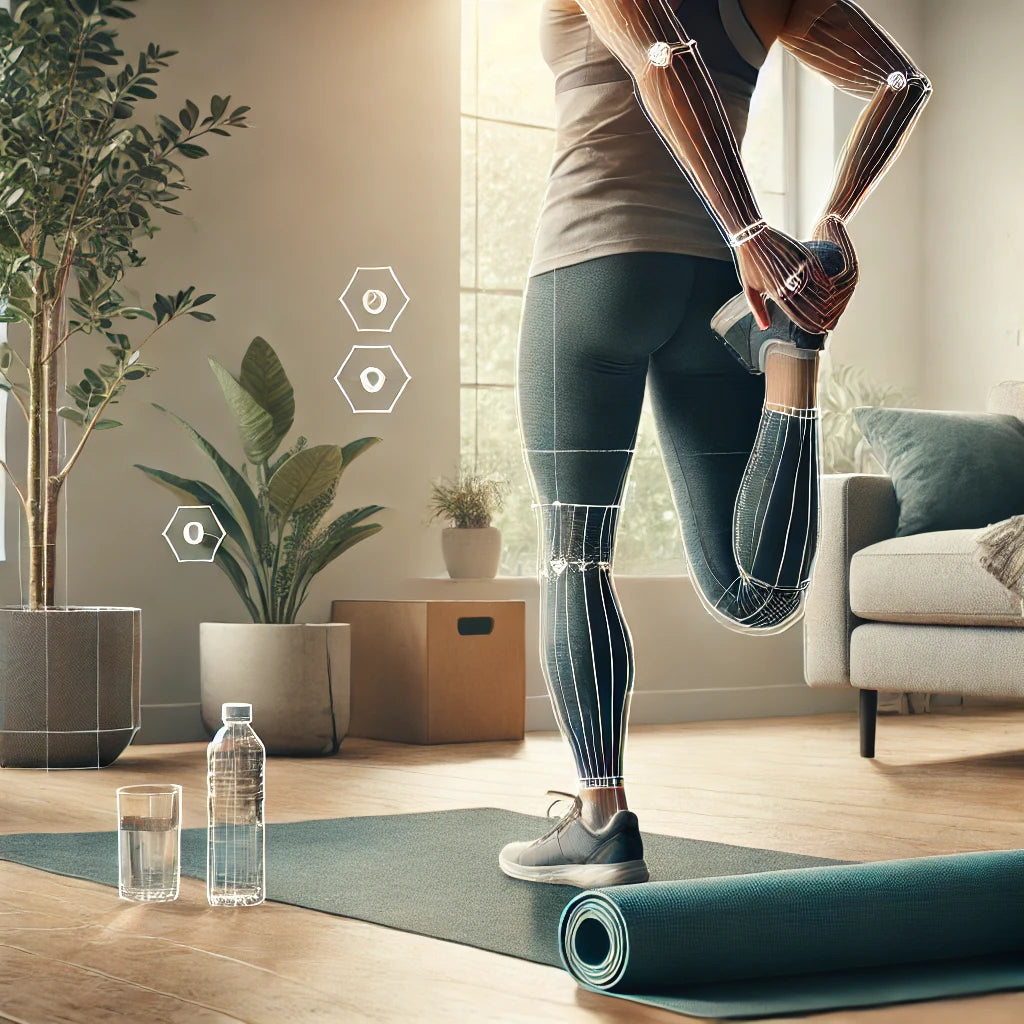
The Importance of Mobility in Injury Prevention
Share
Mobility is often an overlooked aspect of exercise, often seen as secondary to strength or endurance. However, good mobility plays a crucial role in injury prevention, whether for professional athletes or those who exercise occasionally or work out at home. In this article, we explore the importance of mobility, its impact on injury prevention, and how we can effectively improve it.
What is Mobility?
Mobility refers to the ability of a joint to move through its full range of motion with control and without pain. Unlike flexibility, which refers to the passive stretching of muscles, mobility also involves strength and neuromuscular control, allowing for dynamic and stable movements.
For example, an individual may have enough flexibility to touch their feet with their hands, but may not have the mobility needed to perform a deep squat with control, which depends on a balance between strength and flexibility of multiple joints and muscle groups.
How Does Mobility Prevent Injuries?
Lack of mobility can lead to compensations in other areas of the body, putting strain on muscles and joints that shouldn’t be responsible for certain movements. This increases the risk of overuse injuries, sprains, strains, and even stress fractures. Let’s look at how proper mobility can help prevent injuries:
1. Improving Execution Technique
Good mobility allows you to perform exercises with the correct technique. When you can move freely and with control, you avoid compensatory movements that put extra pressure on your joints. For example, when running, a lack of hip mobility can result in strain on your knees and ankles, increasing the risk of injury to these joints.
2. Greater Range of Motion
By increasing the range of motion of your joints, you can prevent muscle stiffness and shortening. This extra range provides a greater ability to absorb shocks and impacts during exercise, which is essential for preventing injuries. It also allows for more fluid and natural movements, reducing the risk of strains and sprains.
3. Muscle Balance
Limited mobility can result in muscle imbalances, where certain muscles become too tight or too weak. These imbalances increase the risk of injury, as the body is unable to distribute forces correctly. By working on mobility, we strengthen muscles throughout their full range of motion, promoting proper balance between opposing muscles (agonists and antagonists).
4. Improves Post-Workout Recovery
Mobility exercises help improve blood circulation and reduce muscle stiffness after training, speeding up recovery. This reduces the risk of overuse injuries as the body recovers more effectively between training sessions.
Key Areas for Improving Mobility
Working on mobility in certain areas of the body is essential to prevent injuries, especially in joints that are prone to stiffness or injury. Here are the main areas to consider:
1. Hips
The hips are responsible for a large part of the body's movements, especially in activities such as running, jumping and squatting. Limited hip mobility can lead to back, knee and ankle injuries. Exercises such as the Hip Flexor Stretch and Pigeon Pose are ideal for improving hip mobility.
2. Shoulders
The shoulders are a highly mobile joint, but they are also vulnerable to injury. Good shoulder mobility is essential to avoid problems such as bursitis, tendonitis and rotator cuff injuries. Active stretching and rotation exercises are essential to maintain shoulder mobility.
3. Ankles
Ankle mobility is often overlooked, but it is essential for good posture and preventing injuries to the feet, knees and even hips. Stretches such as dorsiflexion and dynamic mobility exercises can help improve movement control in this area.
4. Thoracic Spine
Mobility in the thoracic spine (the middle part of the back) is essential for preventing back injuries and improving posture. Stiffness in this area can result in strain on the lower back and shoulders, leading to chronic pain and injury.
How to Improve Mobility?
Improving your mobility doesn’t require complicated equipment or hours at the gym. With consistency and the right exercises, you can increase your mobility at home. Here are some practical tips to include in your routine:
- Dynamic Stretches: Before any workout, do dynamic stretches such as arm circles, hip rotations, and dynamic squats to warm up your joints and prepare your body for movement.
- Static Stretches: After your workout, spend a few minutes doing static stretches to lengthen your muscles and improve flexibility. Focus on the areas where you feel the most stiffness.
- Specific Mobility Exercises: Incorporate mobility exercises such as the Deep Squat, Hip Flexor Stretch, and hip rotations into your weekly routine. These exercises help increase range of motion in a controlled manner.
- Consistent Work: The key to improving mobility is consistency. Dedicate just 10-15 minutes a day to mobility exercises and you will see significant improvements in your performance and injury prevention.
Conclusion
Mobility is a vital component of safe and efficient exercise. By working on your mobility regularly, you can not only prevent injuries, but also improve your athletic performance and quality of life. Regardless of your level of training, investing time in developing mobility is a sure bet for a more functional, strong and healthy body.
Discover more tips and exercises at TreinoEmCasa.com and start taking care of your mobility today!
Transform your life with Training 365 and achieve your goals!
Transform your training routine with Training 365!
Access to 365 annual trainings (50-60 minutes per session), providing you with a varied daily plan that you can carry out at home, outdoors or at the gym . With a new workout every day, you'll stay motivated, active and ready to achieve your fitness goals, whether you're just starting out or improving your performance.
What it includes:
- Daily access to 50-60 minute workouts
- Workouts for all levels
- Flexibility to train anywhere
Value: €18.15/month



